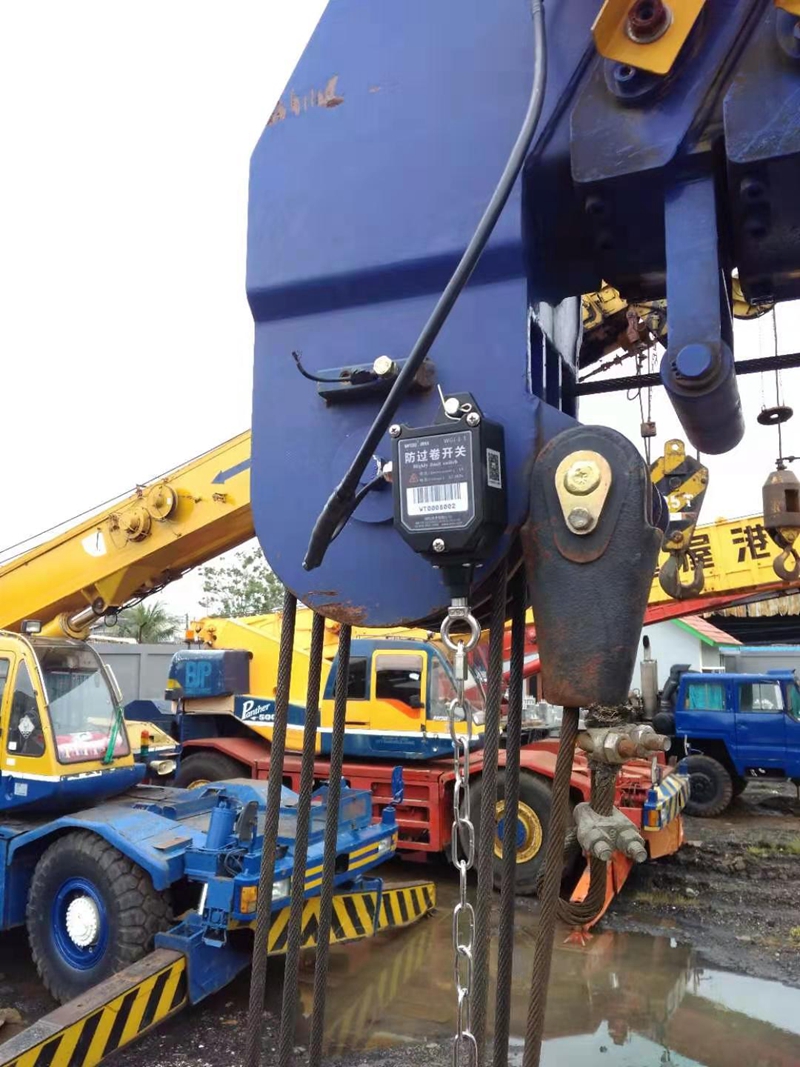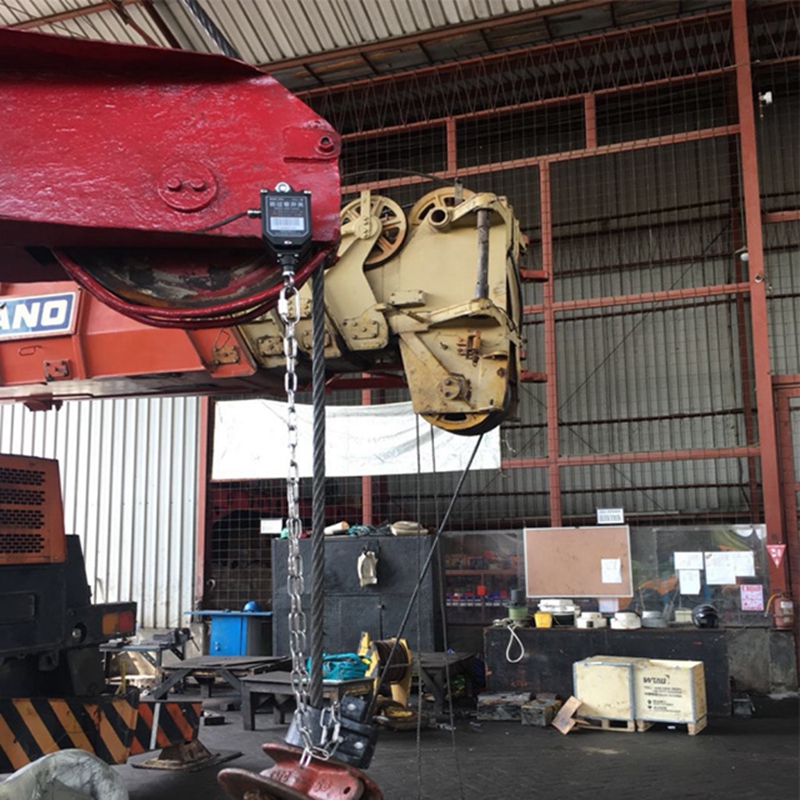Crane Warning Systems
Crane Safety Systems FAQ
These are the three most misused and confused terms in the crane indicator business. A crane load indicator is a cab mounted display connected to various types of load sensors that show the crane operator the weight they are lifting. The load indicator can have other options to monitor more additional information such and anti-two-block, boom angle, length, and radius, but it does not monitor the crane's capacity. So it does not have the crane's load chart programmed into memory and does not calculate the safe working load or warn of an overload unless the operator has manually set a load limit.
A load moment indicator or LMI and a rated capacity indicator or RCI, show the operator the load, capacity, boom angle, length, radius, and usually anti-two-block. The LMI and RCI achieve the same load reading but go about it by different methods. So the main difference between a load indicator and an LMI or RCI is that only the LMI and RCI monitor the cranes capacity and warn of overload.
The difference is in how the force/weight is measured. An RCI or rated capacity indicator uses load sensors that measure the force directly on the hoist line. For example, a dynamometer, also known as a "line rider" uses a load pin in a sheave that the hoist line exerts a force on. The pin then outputs an electronic signal, which can be translated into the weight reading.
The other common type of load sensor used with an RCI is a load link that measures the force being pulled on the hoist line. These can be installed on the "dead-end" where the hoist line is secured to the boom or when using a wireless load link installed above the hook block. Both methods involve measuring the force directly off the hoist line that is lifting the weight.
The LMI or load moment indicator uses sensors that measure the force on the boom, not directly on the hoist line to calculate the weight being lifted. An LMI can use load pins that measure the force on the pendant line on a lattice boom crane or pressure transducers that measure the rod and bore side pressure of a boom lift cylinder.
A crane load indicator will be less expensive than a load moment indicator (LMI) or rated capacity indicator (RCI), but it also provides much less information. Knowing the weight, you are lifting is critical for working safely and keeping your crane from being overloaded, so a load indicator is helpful for that. However, a load indicator still leaves it up to the crane operator to know how much they can lift at each change in their boom angle or radius. The LMI and RCI calculate all that for the operator and show it to them in real-time with the actual numbers and easy to read bar graphic that is green when you are under capacity, yellow as you get near the limit, then red at overload.
This guy may have saved some money on a load indicator, so he knew what the car weighed, but an LMI or RCI would have let him know it was more than he should lift.
The anti-two-block warning system or indicator is also known as an A2B or ATB indicator for short. This is the minimum crane safety indicator all cranes should have. It warns the operator when the hook block is getting too close to the boom tip. A2B warning systems come in wireless and wired versions. The only difference is one requires a cable to connect from the display to the A2B switch at the boom tip and the other uses a wireless transmission for the connection.
The ATB warning system uses a switch at the tip of the boom with a weight on a variable length of chain hanging down the hoist line. When the hook block comes up it lifts the weight which closes the ATB switch and sets of the ATB alarm in the cab. This alerts the operator and anyone in the area that the crane is close to having a collision with the hook at the boom tip.


This is a picture of a wired ATB switch and the weight and chain hanging from it which holds the switch open. In the picture the block is getting close to lifting the weight which will let the ATB switch close and set off the two-block alarm.
The abbreviation LMI stands for Load Moment Indicator, which is a common term used to describe a crane safety indicator. This is a commonly misused and misunderstood term. To be precise, an LMI is a crane operator aide that provides the crane operator with a display of the weight being lifted, the capacity at that radius, along with the boom angle and length. It shows the crane operator how much they are lifting and how much they are allowed to lift according to the crane manufacturers' capacity charts.
What makes a load moment indicator (LMI) different from a rated capacity indicator (RCI) is not the crane operator sees but how the system collects that information. The LMI uses sensors that measure the force on the crane boom, and the RCI measures the force on the hoist line. For example, with a telescopic boom crane, a hydraulic cylinder normally lifts the boom to change the boom angle. When a pressure transducer is installed on both sides of the lift cylinder, you can measure the force on the boom. Combined with a calculation of the boom radius and geometry of the boom cylinder, the weight of the load being lifted is determined. Whereas an RCI, uses a different style sensor such as a load pin or load link that measures the force or tension on the hoist line resulting from the weight of the load being lifted.
The cranes lifting capacity will vary depending on the crane's configuration as the boom moves through its range of motion, the radius changes, and with it, the load capacity. In general, a crane can lift more at a shorter radius versus a longer one. Another factor is the crane set up before the lift. For example, if the crane is using outriggers, it can normally lift more than when just on the tires or crawler tracks. Also, some cranes have counter weights that increase their capacity or have quadrants where they can lift more, such as over front versers over the side.
The Crane LMI measures the force on the crane boom and provides the crane operator with essential lift-related information about the crane. It does all this in a dynamic environment where the crane can be in motion and have multiple lift configurations. The operator will see the weight of the load being lifted, the capacity or amount the crane is capable of lifting safely, along with the boom angle, length, radius, and possibly the anti-two-block (ATB) warning.
Crane LMI's are one of the most helpful operator aides you can add to your crane.
The term crane warning system is a generic phrase used for any type of crane indicator. It could be used to describe an anti-two-block (ATB) system, crane load indicator, crane load moment indicator (LMI), rated capacity indicator (RCI), or any system in between.
Most customers searching for a crane warning system are interested in making their crane safer and easier to use, which makes the crane operations more efficient. Installing an ATB alarm system is an inexpensive addition that makes the crane operator's job safer and easier. The ATB alarm is cheap insurance against expensive boom damage, so it is usually the minimum operator aide added to every crane. The next most important thing most customers want to monitor is the amount of weight they are picking up. A simple load indicator will fill this role. It's very common on a construction site for a crane to be used to lift an object where the weight is unknown, and the operator is forced to guess if he is going to overload the crane. A load indicator combined with a competent operator who understands the crane's load charts can overcome this problem. The load indicator will give the operator a valuable tool to avoid a crane accident or damage to the crane. The best crane warning system is an LMI or RCI, depending on the best fit for the crane. These will show the crane operator all the important lifting-related data, including the weight, capacity, boom length, angle, radius, and ATB warning.
Crane warning systems are an essential operator aid for every crane today. Similar to all the safety advances in cars today, crane warning systems have come a long way and make older cranes safer and more efficient for the owners and operators. They will save you time and money, and for many jobs, they are required, which makes your crane more valuable when you have them installed.
![]() Add.:No.6 Gangcheng Road,Yichang,Free Trade Zone(Hubei) China 443005
Add.:No.6 Gangcheng Road,Yichang,Free Trade Zone(Hubei) China 443005
![]() 86-15507209968(whatsapp)
86-15507209968(whatsapp)